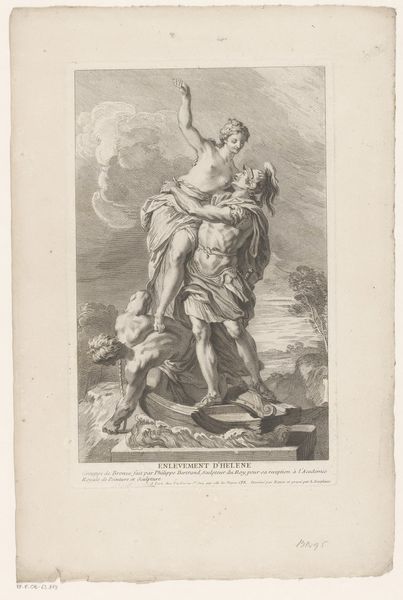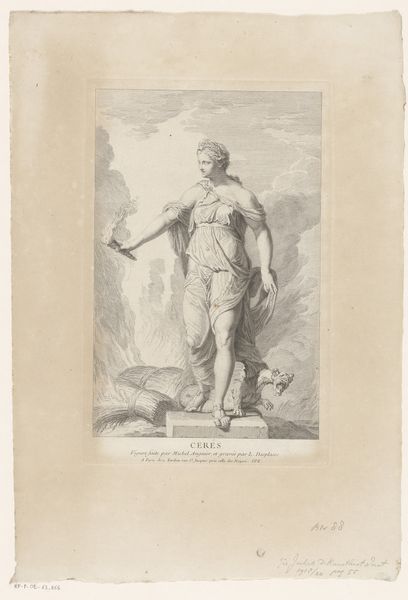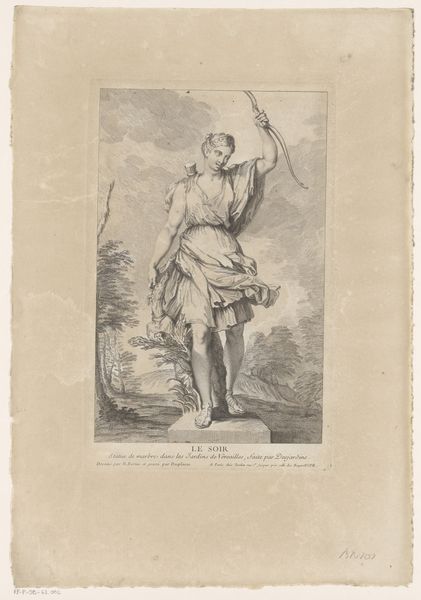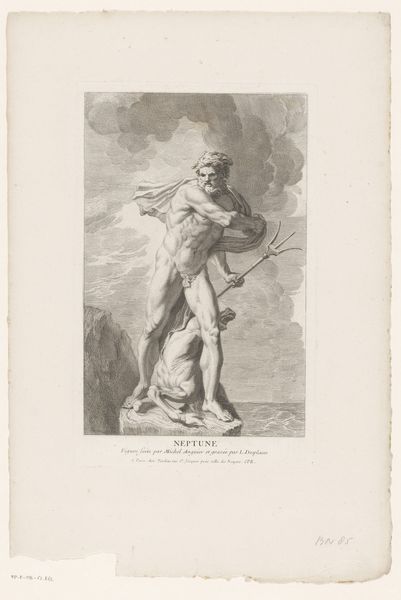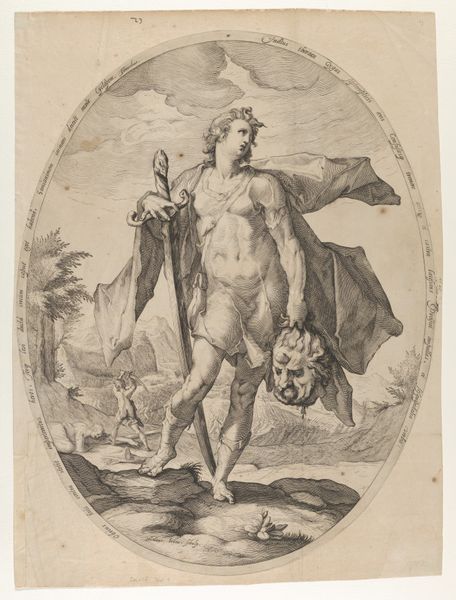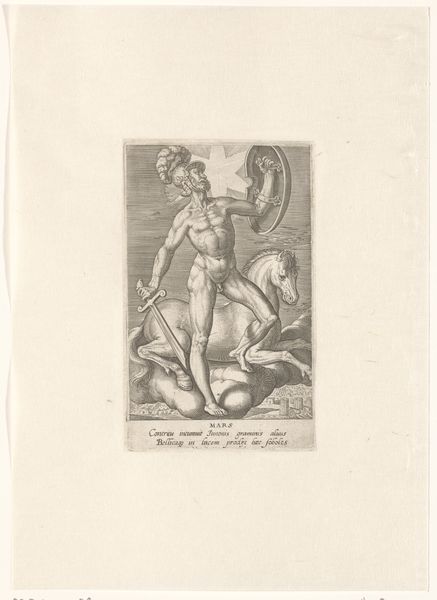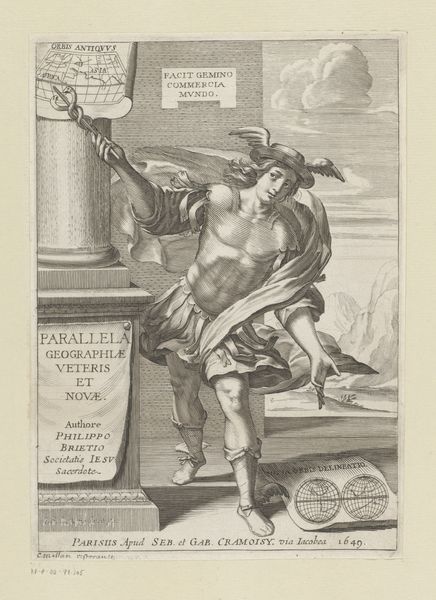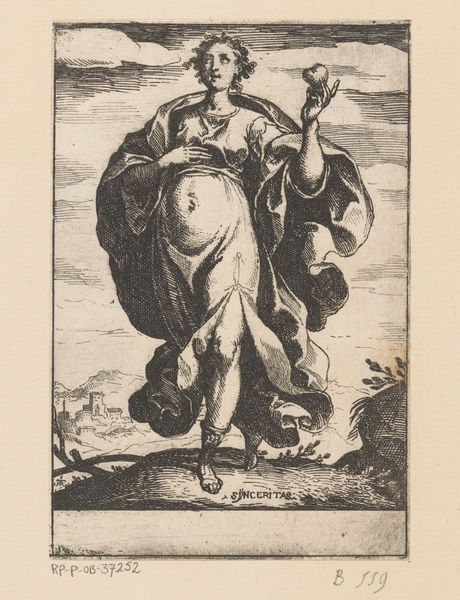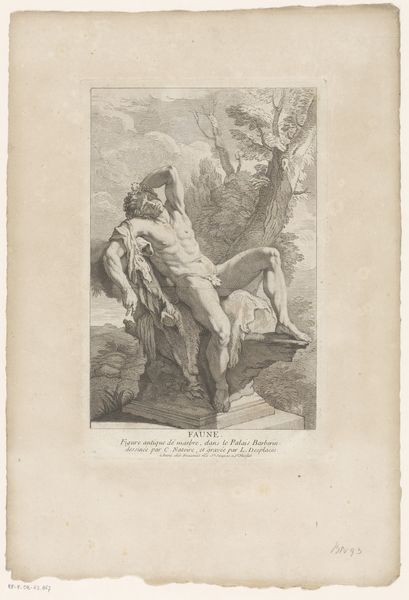
engraving
#
allegory
#
baroque
#
landscape
#
figuration
#
engraving
Dimensions: height 285 mm, width 182 mm
Copyright: Rijks Museum: Open Domain
Curator: This engraving, titled "Afrika," created sometime between 1697 and 1739 by Louis Desplaces, strikes me with its cool detachment. It feels very classical in its composure, almost…aloof? Editor: Yes, I see the detachment too, but I'm immediately drawn to the figure's accessories and their potential social commentary. Look at the elaborate headpiece fashioned from what appears to be an elephant's trunk and the miniature bow and arrow. What raw materials are involved? Where did Desplaces acquire his copper plate? The socioeconomic framework feels intrinsic to me. Curator: Absolutely, but those specific materials also convey meaning, don’t you think? The elephant trunk signifies Africa’s wildlife and abundance, while the bow and arrow represent power and skill. Consider how these symbols would have resonated with European audiences at the time. What psychological effects might such iconography achieve in service of nation? Editor: I find it more relevant to focus on the means of image production: How many engravings were pulled? Who purchased them and how did its message reach broader sections of the populace beyond Versailles? And it depicts a statue based on the gardens at Versailles. That translation into engraving only widens the question of consumption and social context. Curator: That’s interesting. And I think your comments regarding "Versailles" brings to mind concepts of power and how symbols of otherness, here the embodiment of “Afrika,” were incorporated into the visual language of the French court. Also consider the lion at the feet of the figure...such culturally encoded tropes serve purposes beyond mere cataloging of nature. Editor: Agreed. And yet, even this act of imposing those power dynamics is an act of labor—the engraver’s careful work, the printing process itself...it brings a material reality to these abstract allegories. Who were Desplaces’ printers? The labor necessary to render these ideas and motifs, often is the unspoken content of Baroque art. Curator: Ultimately, whether we prioritize the social or the symbolic, both threads deepen our understanding of how "Afrika," embodies a complicated moment in history. Editor: Indeed. Dissecting those complexities through an artwork's production process only reinforces the value in considering labor, circulation, and consumption during the Baroque period.
Comments
No comments
Be the first to comment and join the conversation on the ultimate creative platform.
